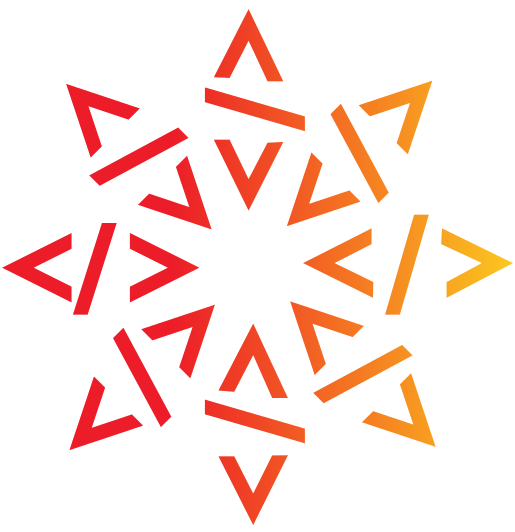Open Science is a team sport; the library is the hub

Libraries advance teaching, research, and learning by providing resources, enabling discovery, and offering expert guidance. As software source code becomes increasingly central to contemporary scholarship, libraries must support researchers who work with it. In this series of interviews, professionals share their approach to research software.
For Clément Pieyre, the Olympic rings best symbolize the indispensable role of libraries in open science. This image highlights how the university library works as a central anchor point for an ecosystem built upon the necessary interdependence of numerous key stakeholders. Pieyre, Bibliothèque Diderot de Lyon director, explains precisely where the library fits into this vital ecosystem:
“University libraries are one of the essential links in implementing a public Open Science policy, working in conjunction with ministerial initiatives, academic governance, research teams, and the public who benefit from open access to knowledge.”
He is also the Open Science representative for ENS de Lyon at France Universités. He serves on the Scientific Council of the École Nationale Supérieure des Sciences de l’Information et des Bibliothèques (2023–2025), and is an Advisory Board member for the Ithaka R+S Library Director Survey 2025. His extensive leadership background includes a two-year term (2022–2024) as Secretary General of the French Association of Directors of University Libraries and Documentation (ADBU). He has contributed as a jury member for the national competition for state library curators (2021–2024).
Key takeaways:
- Adopted in 2023, the Open Science roadmap includes a dedicated chapter on open data and source codes (Action 12). This document not only facilitates dialogue between campus departments and services but is also designed to foster new collaborations.
- ENS de Lyon has integrated the SoftWare Hash Identifier (SWHID) into its open identifier policy.
- The concept of the “embedded librarian” is now more relevant than ever.
- The suite of services supporting the management of research data, codes, and software is structured around four key areas: awareness-raising, project support, establishing data governance for research teams, and monitoring needs in line with local and national initiatives.

Clément Pieyre, Bibliothèque Diderot de Lyon
Looking back, what Open Science predictions did you make that turned out to be the most accurate?
Speaking as a modernist historian, my driving force hasn’t been intuition, but rather the fundamental wish that research results must be more accessible. Publishing in a scholarly, peer-reviewed journal is standard practice, but giving the widest possible access to the outcomes of that work is what truly matters—and that has been self-evident to me from the start.
Over my 15 years as a research library director, I’ve seen the Open Science movement gain momentum. It has proven to be far more than just a concept; it’s a system of tangible mechanisms supported by assertive public doctrine, with clear economic and civic stakes.
Tell us a bit about your organization. What would you like people to know about its work and impact?
The Bibliothèque Diderot de Lyon is a major study and research library, specializing in the humanities, social sciences, and exact and experimental sciences. Since 2022, it has served as the statutory Joint Documentation Service for the École Normale Supérieure de Lyon (ENS de Lyon), operating across both campus sites. This position makes it a pivotal service for accessing scientific information, not just for its own community, but for the entire Lyon-Saint-Étienne academic area.
I may risk stating the obvious, but the Bibliothèque Diderot de Lyon fulfills two fundamental missions: supporting student success and career integration, and advancing research. Since ENS de Lyon defines itself as a school that trains through and for research, the library naturally feeds this continuum between training and research, adapting to needs at every stage.
With over 1.2 million physical documents and nearly 30 linear kilometers of print resources on its shelves (in addition to its extensive digital collection), the Bibliothèque Diderot de Lyon is certainly a library of collections. Crucially, however, it has evolved into much more: a service platform dedicated to a public service mission. This mission is the core focus of its staff, which comprises nearly 80 permanent employees and around 30 student assistants.
What specific role did the library play in shaping the Open Science roadmap?
I had the privilege of co-leading a working group with Jean-Michel Maillet, a physicist deeply committed to the Open Science movement and a founder of SciPost—one of the earliest publishing platforms to adopt the diamond model.
The Bibliothèque Diderot de Lyon is one of ENS de Lyon’s primary research support services, operating alongside entities like ENS Éditions, the Persée Support and Research Unit, and the Blaise Pascal Center for Simulation and Digital Modeling. Consequently, the library’s contribution is woven into several key areas of the institution’s Open Science roadmap.
Our goal was twofold: to highlight existing initiatives while simultaneously shaping prospects that align with the National Plans for Open Science. Essentially, Open Science is not treated as a new pursuit for the Bibliothèque Diderot de Lyon, but rather as a natural evolution of its core missions.
What’s the library’s strategy for managing research data and associated software?
Actually, this is the ENS de Lyon strategy, which the Bibliothèque Diderot de Lyon actively supports. Open Science is a clear priority, detailed in the Institutional Project (2025-2028) under the goal, «A world-renowned research university.»
To manage research data, codes, and software, the library developed and presented a structured service plan. This plan was discussed by the Council of Research Unit Directors (May 2025) and the Documentation Council (July 2025). We are deploying this service along four axes:
- Awareness campaigns (especially for young researchers)
- Project assistance
- Helping teams structure data governance
- Monitoring needs while liaising with national and local partners
After launching the DATALystE data workshop (which coordinates efforts across the Lyon Saint-Étienne academic site), the immediate next step is creating an ENS de Lyon institutional space on Recherche data gouv. [Inaugurated in 2022 by the French Minister of Higher Education and Research, Recherche Data Gouv is the national ecosystem dedicated to managing, sharing, and opening up French research data.]
How does Software Heritage align with the services already offered by your organization?
The Open Science roadmap is still new. Critically, source codes and software are now recognized as first-class academic output, with Software Heritage established as the key infrastructure for their preservation and sharing. This commitment is implemented through adopting the SoftWare Hash Identifier (SWHID) into the open identifier policy and via dedicated communication initiatives.
For instance, an awareness day titled «Codes, Software, and Open Science: Issues of Free Licenses, Archiving, and Code Traceability» was held in October 2024. This event was organized jointly with Software Heritage and the ENS de Lyon Vice-Presidency for Research’s promotion department, which assists authors of software and databases with open-access dissemination (including declaration, verification of the chain of rights, filing with the Agency for the Protection of Programs, and selecting free licenses).
I am pleased to welcome Simon Delamare, a research engineer at the Laboratoire de l’Informatique du Parallélisme, as the institution’s new Software Heritage ambassador. The Bibliothèque Diderot de Lyon plans to collaborate closely with him to advance the open science culture regarding source codes and research software.
The combination of ENS de Lyon’s disciplinary diversity and its «human” scale creates an ideal environment. This setting allows us to test new collaborative workflows between research units, the library, and Software Heritage—specifically around code and software—which can then enrich the wider Software Heritage community.
What expertise are you aiming to bring into your teams next?
My goal isn’t new expertise as much as a shift in our working methods. I particularly favor the idea of the ‘embedded librarian.’ Our teams already have strong skills in information engineering, from descriptive metadata to editorial business models.
Connecting our documentation and services to research in progress means truly understanding the complex environments where research teams operate and anticipating their needs. In short, we must step outside the library walls to effectively promote and apply our “library savoir-faire.»
I wouldn’t call them «communication hurdles» but rather a crucial need to change the perception of university libraries. We are far more than just places to sit, read, or borrow books. University libraries are active research support services that have been implementing public policies for years.
Need evidence? Open archives? Libraries. Research identifiers? Libraries. Read and publish agreements? Libraries. Research data? Libraries.
This work is always done in partnership with other support services and laboratories, because the DNA of university libraries, so to speak, is cross-disciplinary network collaboration. It is therefore essential to foster mutual understanding between all departments and services on campus. In this respect, the Open Science roadmap has unlocked tremendous potential.
Up next
- Stay tuned forthe next interview in our upcoming series with leading librarians.
- Catch up on previous interviews
- Check out the resources on open science produced by Software Heritage
- Implement software deposit in HAL:
- Guide for the end-users
- Guide for the moderators (FR)
- Software deposit tutorials series
- Train the trainer resources: train staff to become effective helpers
- To request free training (moderation or trainer training), please contact Sebastian Mazzarese at the Center for Direct Scientific Communication. Email: sebastien.mazzarese/@/ccsd.cnrs.fr
- Advocate for software deposit among research management.
Di Cosmo, R., Granger, S., Hinsen, K., Jullien, N., Le Berre, D., Louvet, V., Maumet, C., Maurice, C., Monat, R., & Rougier, N. P. (2025). Stop treating code like an afterthought: Record, share and value it. Nature, 646(8084), 284–286. https://doi.org/10.1038/d41586-025-03196-0
Read the SWH Open Science blueprint
